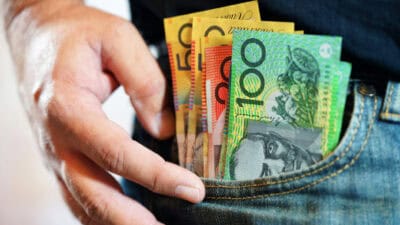Owning ASX dividend shares can be very rewarding, but there are some pitfalls that investors should try to avoid if they're aiming for passive income.
When we think about some of the most well-known dividend-paying ASX shares, we might think of names like Commonwealth Bank of Australia (ASX: CBA) and BHP Group Ltd (ASX: BHP).
But such household names may not be the best ones to own over the long term. Here are three things that passive income investors often get wrong in their choice of ASX dividend shares.
Mistake 1: Bigger yields are better
Bigger dividends yields aren't necessarily better, in my view.
It might be easy to say that BHP's projected grossed-up dividend yield of 7.4% for FY24 (according to Commsec) makes it a better passive income choice than Bunnings owner Wesfarmers Ltd (ASX: WES) which could pay a grossed-up dividend yield of 5.6% in FY24.
For starters, a business with a bigger dividend yield may have a higher risk of the payment being cut to shareholders. As well, miner dividends typically move up and down as commodity prices go through cycles.
At the same time, Wesfarmers is expected to grow its annual dividend per share each year to FY25, as well as grow its earnings.
I don't think there's much point in getting a 10% dividend yield if there's a significant chance of a share price decline of 20%.
Mistake 2: High dividend payout ratios don't matter
I think they do matter.
The dividend payout ratio describes how much of the company's profit it pays out as a dividend each year. The higher the payout ratio, the bigger the cash payments that shareholders are getting.
However, it also means that companies can have less cash on their balance sheets and less money to re-invest for future growth. That can affect investing back into the core business, starting a new division, or making an acquisition.
Ultimately, the more passive income that businesses are paying out to shareholders, the more it can hinder a company's ability to deliver good capital growth over time.
Mistake 3: Passive dividend income is more important than capital growth
A dollar is a dollar, whether it comes from dividends or capital growth. I think they're equally important.
It's great that dividends from Australian companies can come with franking credits attached, but $1 of capital growth is worth just as much as $1 of (grossed-up) passive income.
Currently, investors can get a 50% capital gains discount when they sell a share at a profit if that investment has been held for at least 12 months. That's a helpful factor in offsetting some of the financial gains of capital growth for a lower tax burden.
When I think about which ASX shares have delivered the strongest total returns over the last year — or the last decade — it's capital growth that has delivered the biggest returns. This has been true for names like Pro Medicus Ltd (ASX: PME) and Altium Limited (ASX: ALU), though that's not to say whether those names remain incredible value today.









